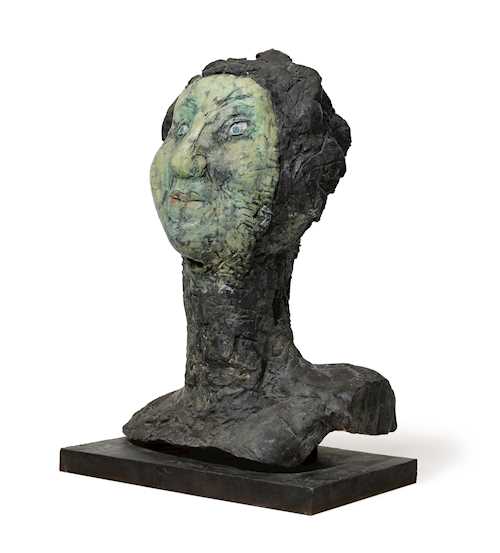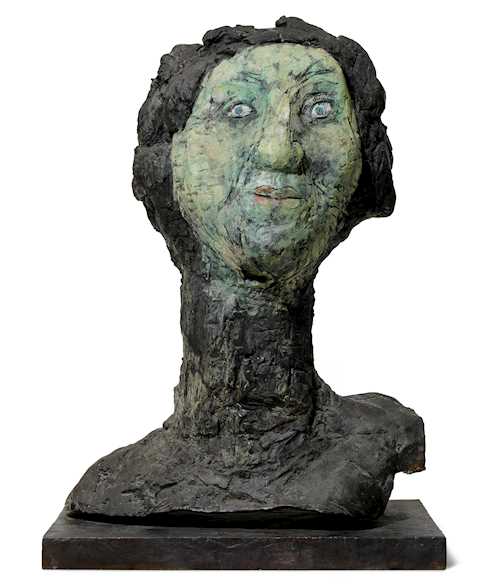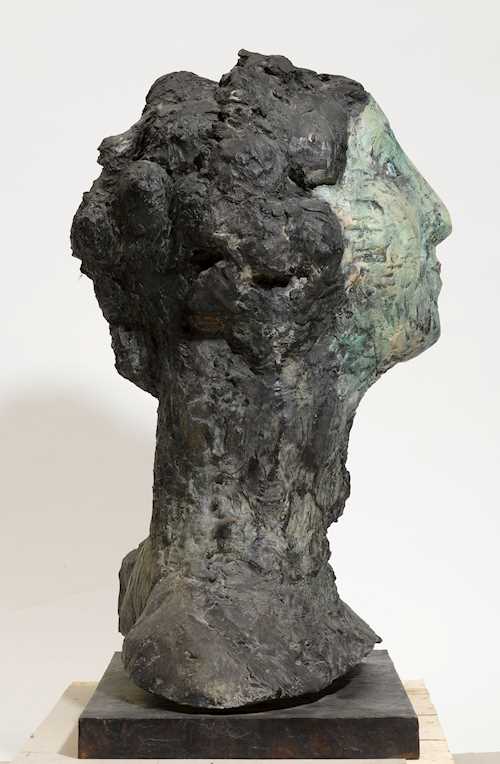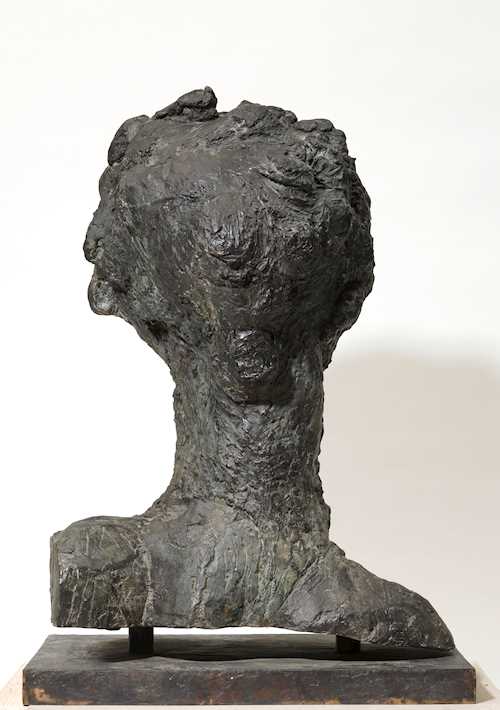
拍品 3469* - A201 战后和当代 - Donnerstag, 30. Juni 2022, 05.00 PM
MARKUS LÜPERTZ
(Reichenberg 1941–lives and works in Düsseldorf)
Judith. 1995.
Bronze, black patina and painted. Artist's proof outside the edition of 6.
With the stamped monogram, number and the foundry stamp on the back of the plinth: ML 00 SCHMÄKE DÜSSELDORF.
110 × 75 × 47.5 cm.
Provenance: Directly purchased from the artist by the present owner, since then collection Switzerland.
“That is why I understand my painted sculptures as objects that I have encountered in my paintings. It is true that painters see sculpture in a completely different way. For me as a painter, as sculpture has to offer a surprise from every side, while sculptors make sure that the logic of the front view complements the back. Moreover, all great painters have created sculptures, sometimes more important ones than sculptors. Sculpture and painting are one, no break, no way out.” Markus Lüpertz
The painter, graphic artist, and sculptor Markus Lüpertz is one of the best-known exponents of Neo-Expressionism. His works — paintings, sculptures and even church windows — are large-format and expressive. Lüpertz does not create images of reality. The dominant theme in his oeuvre is his examination of German history. Greek mythology as well as the Bible are often points of reference in his works. With his dithyrambic paintings in the 1960s, the artist heralded a new type of expressive painting. Going against the prevailing trend towards abstraction, Lüpertz began to paint his works with simple representational motifs, yet he still saw himself as an abstract artist who combined abstraction with realism. His pictorial worlds, which also include military motifs, sparked much controversy in earlier years.
The present bronze sculpture represents Judith, the biblical figure, in the form of a bust. As with other sculptures, in the work offered here Lüpertz seeks the simplicity of the archaic. He depicts the strong-willed heroine, who is characterised by her mysterious suggestive power, in all her sublimity. The elongated neck is particularly striking. He evokes her tough appearance simply through the roughly worked surface of the bronze. Lüpertz also invests the protagonist with a great deal of colour, using blue, red, and green for the eyes, lips, and face.
Markus Lüpertz was born in Liberec, Bohemia, on 25 April 1941. At the age of seven, he fled with his family from what was then Czechoslovakia to Rheydt in the Lower Rhine region. From 1956 to 1961 Lüpertz studied at the Werkkunstschule Krefeld and the Kunstakademie Düsseldorf, along with a period at the Maria Laach monastery and a stint in the French Foreign Legion. He earned his money in mining and road construction. His artistic career truly began when he moved to Berlin in 1962. When he was just 33, Lüpertz was offered a professorship at the art academy in Karlsruhe. After a short time, he moved to the Kunstakademie in Düsseldorf, first as professor, then taking over the rectorship from 1987 to 2009. Lüpertz made his international breakthrough in 1977 with a major exhibition at the Stedelijk Museum in Amsterdam. His artworks are exhibited worldwide and enjoy national and international recognition.
CHF 70 000 / 90 000 | (€ 72 160 / 92 780)




